Protein
23.50 %
Parameters:
23.50 %
16.00 %
11.00 %
9.00 %

External packaging:Printed polypropylene bag. Net weight: 35.00 Kg Ground dry beer bran. Net weight: 25.00 Kg Dry, unground beer bran.
6 months.
| CEBADA | |
|---|---|
| Humidity | 13.1 |
| Protein | 10.4 |
| Fat | 1.7 |
| Fiber | 4.6 |
| Ash | 2.1 |
| Starch | 50.9 |
| Ca | 0.05 |
| P | 0.33 |
| Ca:P | 0.15 |
| Na | 0.01 |
| K | 0.5 |
| Cl | 0.01 |
| FDA | 5.7 |
| FDN | 15.5 |
| RUP | 35 |
| EM POULTRY | 2791 |
| VEM | 975 |
| Lysine | 3.6 |
| Methionine | 1.7 |
| Cystine | 2.2 |
| Threonine | 3.4 |
| Tryptophan | 1.2 |
| Isoleucine | 3.5 |
| Arginine | 4.9 |
| Phenylalanine | 5 |
| Histidine | 2.2 |
| Leucine | 6.9 |
| Tyrosine | 3.1 |
| Valine | 4.9 |
| Alanine | 4.1 |
| Aspartic | 6 |
| Glutamic | 23.5 |
| Wisteria | 4 |
| Proline | 10.8 |
| Serine | 4.2 |
It is the dry residue extracted from Barley Malt or mixed with other cereal grains or grain products, resulting from the manufacture of wort or beer, and which may contain spent hop residues in an amount that does not exceed 3%.
After carrying out the germination processes, cooking the malt and mixing it with crushed cereals to obtain the must as a result; A filtering and selection process is carried out from which a residue containing 81% moisture is collected, which when subjected to drying, its humidity fluctuates between 7 and 10% and its color may vary according to the type of barley and Of the crushed materials used, it is generally grayish or brownish yellow in color.
| BEER BRAN | BEER YEAST | |
|---|---|---|
| Humidity | 9.7 | 6.4 |
| Protein | 24.5 | 46.8 |
| Fat | 6.7 | 2.6 |
| Fiber | 13 | 2.2 |
| Ash | 4.4 | 6.9 |
| Starch | 4.9 | 8.4 |
| Ca | 0.34 | 0.21 |
| P | 0.45 | 1.11 |
| Ca:P | 0.76 | 0.19 |
| Na | 0.01 | 0.33 |
| K | 0.05 | 1.98 |
| Cl | 0.01 | 0.16 |
| FDA | 19.6 | 0 |
| FDN | 48.9 | 0 |
| RUP | 58 | 60 |
| EM POULTRY | 2345 | 2611 |
| VEM | 814 | 913 |
| Lysine | 3.8 | 6.7 |
| Methionine | 1.9 | 1.6 |
| Cystine | 1.9 | 1.1 |
| Threonine | 3.7 | 4.8 |
| Tryptophan | 1.2 | 1.2 |
| Isoleucine | 4 | 4.6 |
| Arginine | 4.9 | 4.4 |
| Phenylalanine | 5 | 4.2 |
| Histidine | 2.3 | 2.1 |
| Leucine | 7.9 | 6.8 |
| Tyrosine | 3.1 | 3.3 |
| Valine | 5.4 | 5.3 |
| Alanine | 5.3 | 6.3 |
| Aspartic | 6.8 | 9 |
| Glutamic | 18.4 | 12.6 |
| Wisteria | 4 | 4.5 |
| Proline | 8.9 | 4.1 |
| Serine | 4.3 | 5 |
Bran in its aminogram shows a balanced composition in terms of the most limiting amino acids in the monogastric species such as: Lysine, metheonine, metheonine plus cystine and tryptophan, in relation to other raw materials that due to their characteristics could have certain similarities, such as rice and wheat by-products; however, in relation to the mineral content, bran contains inverted levels of calcium and phosphorus ratio and low levels of potassium.
It is important to highlight that the nutritional properties of bran are concentrated in the PROTEIN CHARACTERISTICS, which makes this by-product a highly beneficial element for feeding ruminants. The protein fraction or true protein of a concentrate and/or raw material is activated in principle by the microorganisms of the rumen, undergoing degradation into amino acids and peptides and leaving a protein fraction called slow or over-degrading, which continues its passage towards the small intestine and there it is degraded by the action of the animal's enzymes as a monogastric animal would do to assimilate it.
For vegetables, the solubility is very variable, corn, which has a high content of soluble Zein, is only 40% split, Soy Cake or Flour is the typical example of protein from an ingredient that has a degradable fraction of 60%. , and 40% escapes degradation in the rumen and passes intact to the small intestine. Corn gluten, distillers grains, palm kernel, and dried brewer's bran are examples of bypass proteins.
| % PROTEIN | RUP | |
| Corn | 8.2 | 57 |
| Soy Cake | 46 | 40 |
| Corn Gluten | 61 | 72 |
| DDGS | 26.1 | 57 |
| Wheat bran | 15.6 | 23 |
| Palm kernel | 15 | 63 |
| Rice Powder | 15 | 29 |
| Maltese roots | 17 | 20 |
| Beer Bran | 24.5 | 58 |
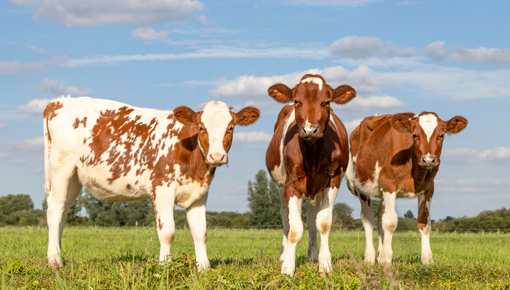
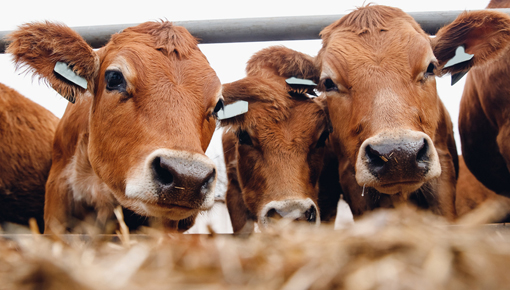
Polan et al (1985) carried out an experiment with beef calves and gave them Urea, Soybean Cake and Brewery Bran as supplements.
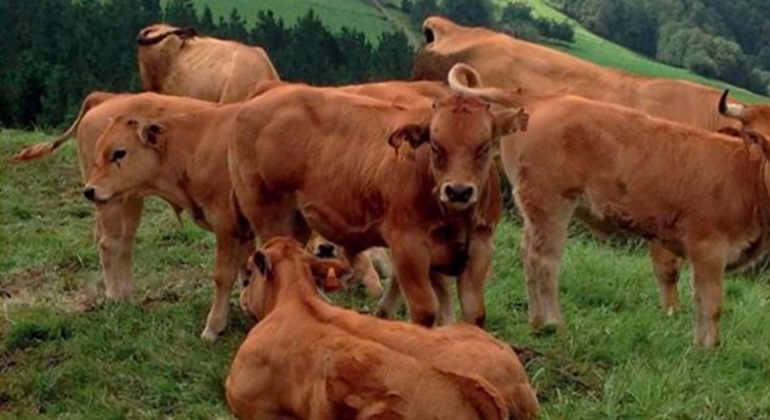
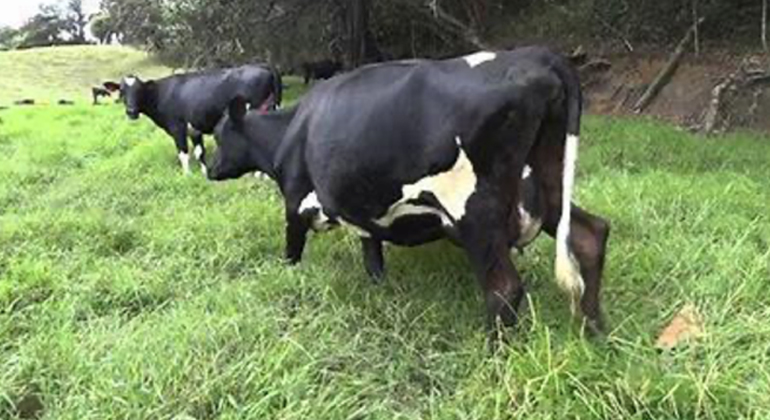
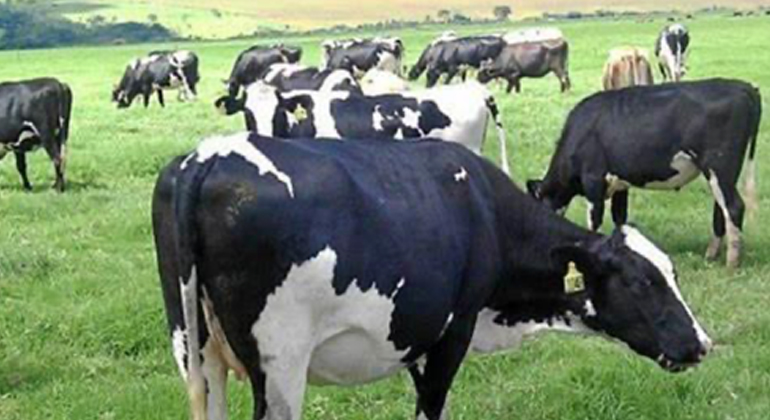
Chart (1):
| ITEMS | FIRST TREATMENT | SECOND TREATMENT | THIRD TREATMENT | FOURTH TREATMENT |
|---|---|---|---|---|
| 1.- Dry Beer Grains (%)* | 0 | 10 | 20 | 30 |
| 2.- Soy flour (%) | 9 | 8 | 7 | 6 |
| 3.- Barley (%) | 56 | 50 | 45 | 40 |
| 4.- Wheat Bran (%) | 33 | 30 | 26 | 22 |
| 5.- Limestone (%) | 1 | 1 | 1 | 1 |
| 6.- Sales (%) | 1 | 1 | 1 | 1 |
Chart (2):
| PROPERTIES | 1er TREATMENT (0% Dry Brewers Grains) |
2do TREATMENT (10% Dry Brewers Grains) |
3er TREATMENT (20% Dry Brewers Grains) |
4to TREATMENT (30% Dry Brewers Grains) |
|---|---|---|---|---|
| 1.- Initial Weight (Kg) | 498 | 491 | 509 | 520 |
| 2.- Final Weight (Kg) | 503 | 497 | 516 | 528 |
| 3.- Concentrated Feed Consumption (Kg): ** | 13.560 ± 0.43C | 14.409 ± 0.45 C | 15.931 ± 0.84 B | 17.280 ± 0.17 A |
| 4.- Forage food (straw) intake (Kg): | 3.500 | 3.500 | 3.500 | 3.500 |
| 5.- Total Food Intake (Kg): ** | 17.060 ± 0.43 C | 17.910 ± 0.45 C | 19.423 ± 0.84 B | 20.780 ± 0.17 A |
| 6.- Feed Conversion (Kg of feed intake/kg of milk yield): ** | 1.860 ± 0.17 A | 1.530 ± 0.11 B | 1.310 ± 0.07 C | 1.295 ± 0.02 C |
| 7- Protein Intake (Kg): ** | 2.133 ± 0.07 C | 2.248 ± 0.07 C | 2.468 ± 0.13 B | 2.658 ± 0.03 A |
| 8- Metabolize Energy (Kg/Mcal): ** | 36.10 ± 1.26 D | 38.66 ± 1.22 C | 42.51 ± 2.23 B | 45.69 ± 0.45 A |
Chart (3):
| PROPERTIES | 1er TREATMENT (0% 0% Dry Brewers Grains) |
2do TREATMENT (10% Dry Brewers Grains) |
3er TREATMENT (20% Dry Brewers Grains) |
4to TREATMENT (30% Dry Brewers Grains) |
|---|---|---|---|---|
| 1- Milk Production (Kg)** | 9.348 ± 0.69 D | 11.797 ± 0.53 C | 14.927 ± 0.21 B | 16.060 ± 0.12 A |
| 2- PH Milk | 6.77 ± 0.05 A | 6.73 ± 0.03 A | 6.73 ± 0.01 A | 6.71 ± 0.03 A |
| 3- Humidity (%)* | 88.56 ± 0.14 A | 87.83 ± 0.28 AB | 87.74 ± 0.19 AB | 87.27 ± 0.21 B |
| 4- Ashes (%)* | 0.64 ± 0.07 B | 0.77 ± 0.07 AB | 0.81 ± 0.06 A | 0.87 ± 0.07 A |
| 5- Raw Protein (%)** | 2.98 ± 0.23 C | 3.17 ± 0.17 B | 3.22 ± 0.18 B | 3.40 ± 0.15 A |
| 6- Milk Fat (%)* | 3.14 ± 0.09 B | 3.69 ± 0.20 A | 3.78 ± 0.07 A | 4.04 ± 0.10 A |
| 7- Lactose sugar (%) | 4.68 ± 0.13 A | 4.55 ± 0.10 A | 4.45 ± 0.17 A | 4.42 ± 0.28 A |
| 8- Non-fat Solids (%) | 8.30 ± 0.23 A | 8.49 ± 0.10 A | 8.48 ± 0.15 A | 8.69 ± 0.18 A |
| 9- Total Solids (%)* | 11.44 ± 0.14 B | 12.17 ± 0.28 AB | 12.26 ± 0.19 AB | 12.73 ± 0.03 A |
Greater consumption of dry matter, bran does not drastically increase the levels of urea nitrogen in blood plasma, which is very beneficial when diets depend on grasses and forages that have high protein degradation, such as Ryegrass or Kikuyu.

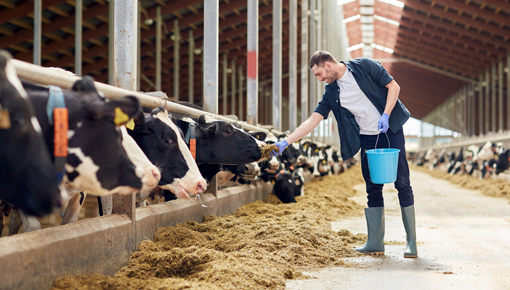

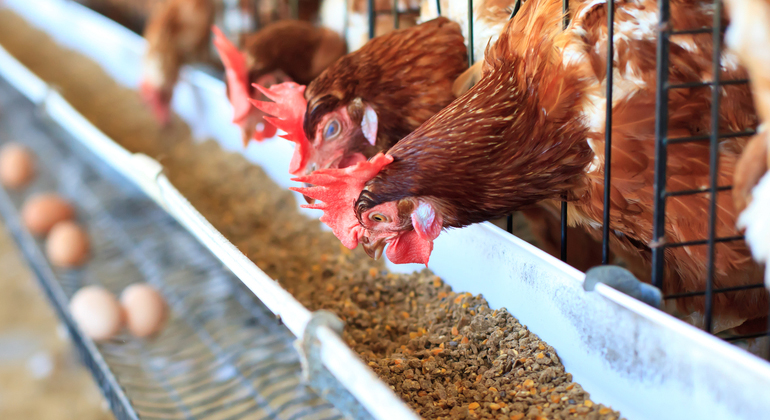
| BEER BRAN | BEER YEAST | |
|---|---|---|
| % | % | |
| Humidity | 9.7 | 11.7 |
| Protein | 24.5 | 15.6 |
| Fat | 6.7 | 3.5 |
| Fiber | 13 | 10.7 |
| Ash | 4.4 | 5.5 |
| Starch | 4.9 | 16.8 |
| Ca | 0.34 | 0.14 |
| P | 0.45 | 1.11 |
| Ca:P | 0.76 | |
| Na | 0.01 | 0.02 |
| K | 0.05 | 1.25 |
| Cl | 0.01 | 0.13 |
| FDA | 19.6 | 13.7 |
| FDN | 48.9 | 45.3 |
| RUP | 58 | 23 |
| EM POULTRY Kcal/kg | 2345 | 1573 |